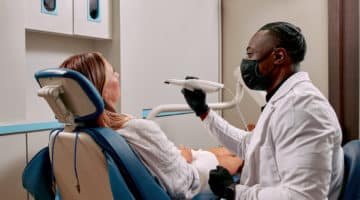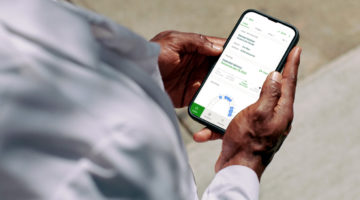Most dental practice owners start in dentistry and find themselves running a practice, often with little business training. There is no shortage of vendors to help, with promises of impressive growth, cost efficiency, and skyrocketing profits. These vendors are often peddling tactics from the bottom — tweaks to existing workflows that may not deliver as promised.
For most practices, the primary drivers of success are:
- Hiring and retaining staff
- Keeping profits healthy as costs rise
- Increasing referrals and retaining patients
- Improving case acceptance
- Providing excellent patient care
If you’re looking for a sustainable way to grow your dental practice, it’s essential to start investing in modern digital tools and technology to drive success, specifically in these areas.
We invite you to zoom out of the realm of tactics and into the bird’s eye view of strategy. In the new era of dentistry, the key strategy for growth in these areas is clear: modernization.
What is a modern dental practice?
A modern dental practice uses digital tools, technology, and processes to enhance clinical skills, streamline operational workflows, and increase practice efficiency throughout practice functions. Modernization is a key strategy for dental practice growth, and here’s why.
Modern dental practices keep the patient experience front of mind.
Up-to-date tools leads to improvements in every aspect of the practice, directly and indirectly affecting the patient experience. Streamlined processes using digital tools reduce chair time, leading to more on-time appointments. This wealth of newfound time can have significant ripple effects beyond simply keeping the schedule under control. When appointments are quick and seamless, there’s less stress for patients; they don’t feel rushed and there’s more opportunity to connect with the patient, creating a secure doctor-patient relationship. The operatory itself has modernized over the years, with a focus on patient comfort. Headphones and TVs (with streaming services) and non-clinical decor helps put the patient at ease, and tools such as a digital scanner replaces uncomfortable physical impressions and long adjustments, among myriad other benefits.
For patients, there is an undeniable ‘cool factor’ to the modern dental practice, with its seamless technology and the polished atmosphere it engenders. Digital tools provide an elevated patient experience, fostering a positive relationship with the dental practice and leading organically to enthusiastic referrals.
Modern digital tools make any practice instantly more attractive to both new patients and staff.
For dental assistants, taking physical impressions can be an arduous and messy process with much more paperwork when compared to the simplicity of taking a digital impression. One dental assistant told us that she would dread taking analog (PVS) impressions because of the messy preparation, gagging, and paperwork. Her job became infinitely better when the practice began using an intraoral scanner for restoration impressions.
For dental practice admins — front desk staff, office managers — modernization may look like: upgraded practice management systems, digital intake forms, scheduling tools, automated appointment confirmations, and more. Digitization of clinical workflows also eliminates the administrative burden of ordering and storing office supplies, such as impression materials (PVS, alginate, trays), and the time-consuming task of sending physical impressions to a lab.
When choosing a workplace, dental staff are increasingly prioritizing practices that provide them with the digital tools that help make their jobs effortless. As these devices become ever more common, practices that choose not to use them can unintentionally communicate to prospective employees that their staff’s time and skillset are not highly valued.
Modernization improves case acceptance rates among patients, leading to more active participation in their dental health.
With a digital scanner, dentists can show the patient a 3D rendering of their teeth, encouraging investment in necessary treatments. For patients who have yet to experience this, it has a real wow factor. It can feel like a step into the future, getting them excited about their smile in a new way. Conversely, for those who’ve already been exposed to this technology, traditional physical impressions can feel outdated and regressive, sending the wrong message about the practice. Long appointments with messy, uncomfortable impression procedures can significantly deter consistency and loyalty to a practice.
—
The modern patient’s experience is valuable. The modern dental staff’s experience is valuable. The modern dental practice owner prioritizes that experience, leading to better treatment, investment, and higher retention of staff and patients, in turn, creating an environment of exponential growth, longevity, and success for the practice.
Interested in more tips on modernizing your practice? Watch Kenn Butler (Dandy) and Nate Nelson (Weave) dive into 3 Ways to Modernize Your Practice and Generate More Revenue.



